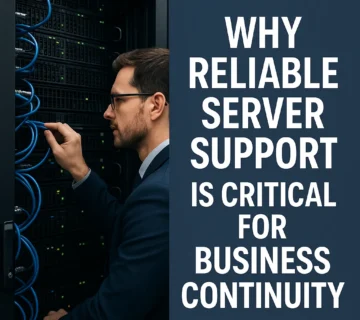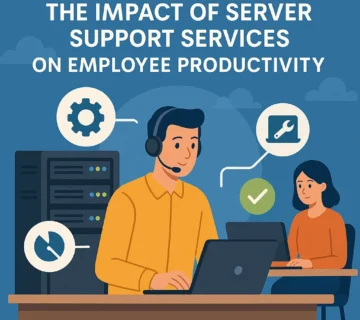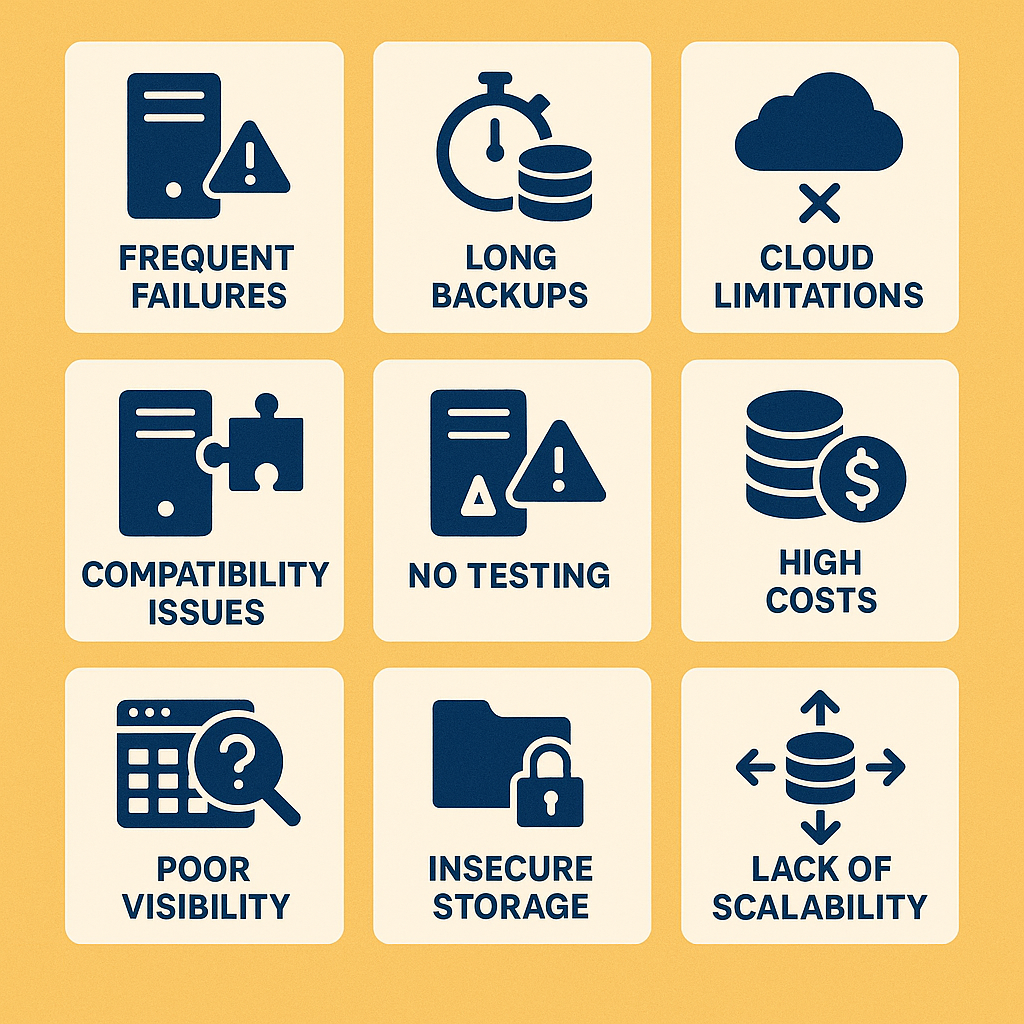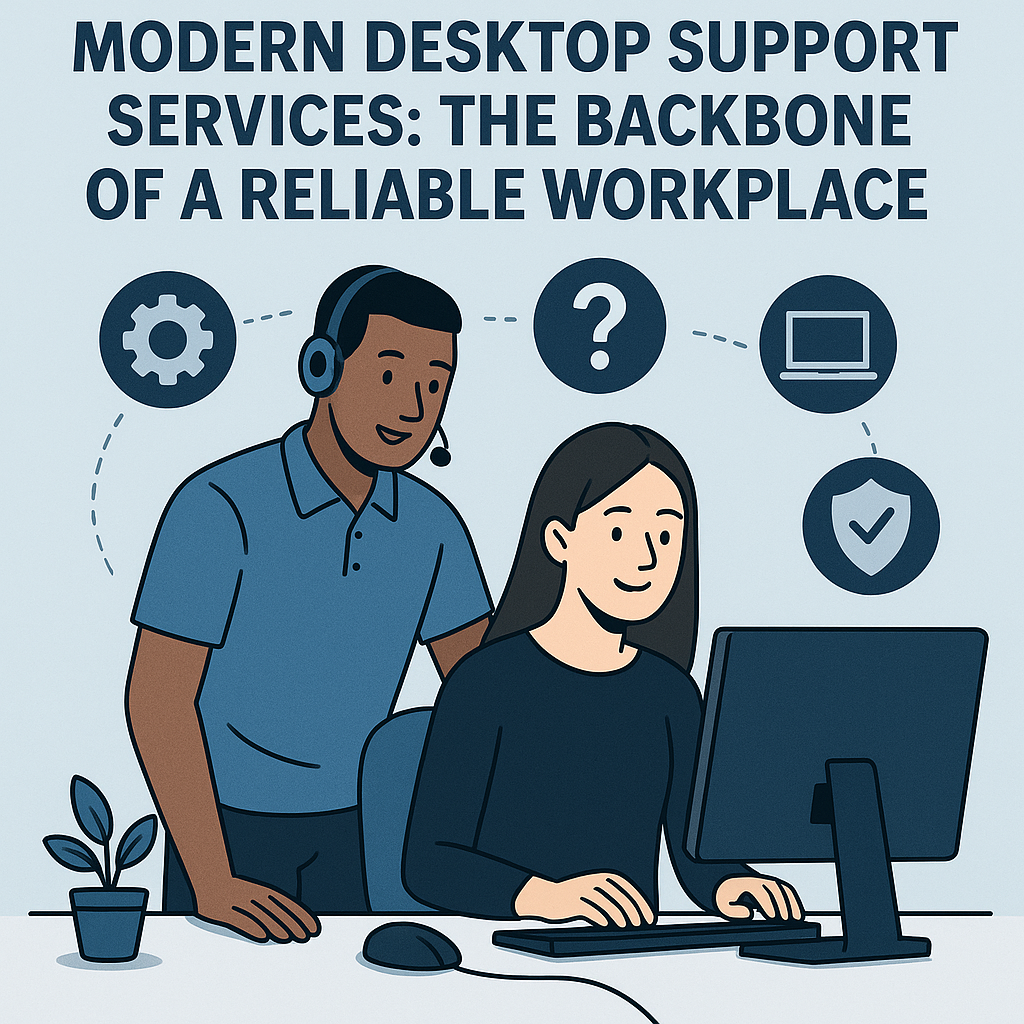Server Support Myths You Need to Stop Believing Today

Servers are the backbone of modern business operations—whether you run a small office with a single on-premise server or a large multi-site organization with a hybrid cloud environment. Despite their importance, server support one of the most misunderstood areas of IT. Misconceptions spread quickly, and many of them lead to costly downtime, performance bottlenecks, security risks, and even unexpected data loss.
It’s time to clear the fog. In this article, we’ll break down the most common server support myths that many business owners, managers, and even IT team members still believe—and explain the truth behind them. Understanding these myths will help you make better decisions, strengthen your infrastructure, and protect your business from preventable issues.
Myth #1: “Once a Server Is Set Up, It’s Good to Go Forever”
Many organizations assume that once their server is configured, it will operate smoothly without intervention. This couldn’t be further from the truth.
The Reality: Servers Need Regular Maintenance to Stay Healthy
Servers run complex operating systems, applications, and background processes that constantly evolve. Without ongoing maintenance—such as patching, updates, disk cleanup, firmware upgrades, and performance tuning—your server becomes vulnerable to security breaches, slowdowns, and failures.
Businesses that neglect maintenance often experience:
-
Sudden crashes due to outdated drivers
-
Vulnerabilities exploited by attackers
-
Gradual performance degradation
-
Storage shortages
-
Bottlenecks caused by old applications
A server is like a vehicle: if you don’t maintain it, it will break down.
Myth #2: “We Don’t Need Server Support—Everything Is in the Cloud Now”
Cloud adoption has skyrocketed, but believing that “the cloud eliminates server support” is a dangerous myth.
The Reality: Cloud Servers Also Require Professional Support
Even cloud platforms like Microsoft Azure, AWS, and Google Cloud require:
-
Configuration
-
Monitoring
-
Backups
-
Security hardening
-
Optimization
-
Compliance review
Cloud services reduce the need for physical hardware management, but they do not eliminate server administration. In fact, misconfigurations in the cloud are one of the leading causes of data exposure and service outages.
A hybrid approach—local servers for critical data and cloud servers for scalability—is now the norm. Both environments require professional oversight.
Myth #3: “Server Support Is Only Needed During Emergencies”
Waiting until disaster strikes to call for support is one of the costliest mistakes a business can make.
The Reality: Proactive Support Prevents Emergencies
Most server failures don’t happen suddenly—they build up gradually through:
-
Hard drive wear-and-tear
-
Overheating
-
Failing fans
-
Software conflicts
-
Corrupted databases
-
Malware infections
Proactive monitoring and preventative maintenance reduce the likelihood of downtime and allow issues to be detected early before they escalate.
Emergency support is reactive and typically more expensive. Proactive server support is strategic, predictable, and cost-effective.
Myth #4: “Small Businesses Don’t Need Professional Server Support”
It’s common for small businesses to assume that professional server support is a luxury only large companies need.
The Reality: Small Businesses Are Even More Vulnerable
Small organizations often have:
-
Limited IT staff
-
Less redundancy
-
Fewer backup resources
-
Tighter budgets
This makes them more susceptible to downtime. A single server issue can halt operations—from email services and CRM systems to financial applications and shared files.
One hour of downtime can cost thousands, especially if your business relies on digital operations or automated services.
Professional server support ensures:
-
Proper security
-
Stable performance
-
Quick recovery
-
Business continuity
Regardless of size, every business benefits from expert server management.
Myth #5: “If It’s Running Fine, Don’t Touch It”
This is an old-school belief that leads to major trouble.
The Reality: “Running Fine” Doesn’t Mean Safe or Efficient
Just because a server appears stable doesn’t mean it’s healthy. Under the surface, there may be:
-
Unpatched vulnerabilities
-
Failing hardware components
-
Overloaded memory
-
Corrupted files
-
Unoptimized databases
Servers often show no symptoms until the problem is critical. Proactive server support ensures the invisible problems are addressed before they cause downtime.
Myth #6: “A Single Backup Is Good Enough”
Many businesses believe they’re safe because they have a backup. Unfortunately, this is one of the riskiest misconceptions in IT.
The Reality: You Need a Multi-Layered Backup Strategy
A reliable backup strategy should include:
-
On-site backup for fast restores
-
Off-site or cloud backup for disaster recovery
-
Image-based backup for full server restoration
-
Routine backup testing to ensure everything is functional
A single backup is not a strategy—it’s a gamble. Hardware failure, ransomware, or physical disasters can eliminate your only copy if you’re not careful.
Myth #7: “Anyone in IT Can Handle Server Support”
Servers require specialized knowledge. Not every IT technician is trained in server administration.
The Reality: Server Support Requires Deep Expertise
A server technician must understand:
-
Active Directory
-
Virtualization platforms (VMware, Hyper-V)
-
Cloud servers
-
DNS/DHCP
-
Storage systems
-
RAID configurations
-
Security hardening
-
Backup systems
-
Disaster recovery planning
General IT staff may excel at desktop support but lack the advanced skills needed to maintain mission-critical server infrastructure.
Specialized server support ensures stability, performance, and security.
Myth #8: “Server Support Is Too Expensive”
Business owners often hesitate to invest in server support, thinking it’s an unnecessary cost.
The Reality: Downtime Is Far More Expensive
Here are common costs that arise when server issues occur:
-
Lost productivity
-
Missed customer opportunities
-
Late project delivery
-
Emergency repair fees
-
Compliance penalties
-
Data recovery costs
A planned, predictable support plan is always more affordable than the surprise expense of a server crash.
Myth #9: “Cybersecurity Tools Alone Will Protect Our Server”
While cybersecurity solutions are essential, tools alone can’t fully protect your infrastructure.
The Reality: Security Requires Ongoing Support and Monitoring
Cybersecurity is a combination of:
-
Tools
-
Policies
-
Monitoring
-
Human expertise
Servers need constant updates, vulnerability scans, configuration reviews, and log monitoring. Without human oversight, security gaps remain wide open.
Myth #10: “Our Server Is Too Old to Upgrade—We’ll Just Keep Using It”
Some businesses hold on to old servers for years, hoping to save money.
The Reality: Old Servers Pose Serious Risks
Aging servers suffer from:
-
Slower performance
-
Hardware fatigue
-
Compatibility issues
-
Higher security risks
-
Increased power usage
Replacing a server every 5–7 years is best practice. An outdated server is a ticking time bomb.
Final Thoughts: Don’t Let Server Support Myths Put Your Business at Risk
Believing these myths can lead to costly downtime, security breaches, data loss, and operational disruptions. The truth is straightforward: servers require consistent professional support, no matter how big or small your business is.
When your servers run smoothly, your entire organization benefits—faster performance, stronger security, reduced downtime, and better productivity.







No comment